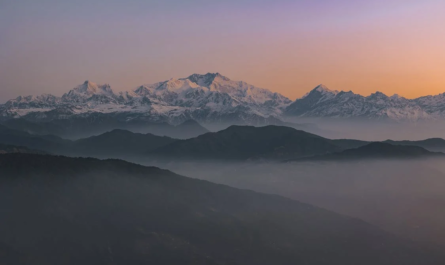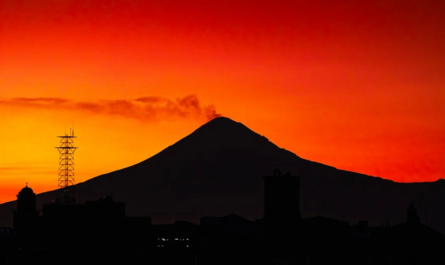Mount Rigi has long captivated visitors, from seasoned hikers and nature lovers to artists and poets seeking inspiration. One of the most fascinating aspects of Mount Rigi’s natural allure is its rare glacial formations, which stand as a testament to nature’s artistic brilliance and the passage of time. These ice formations, sculpted over millennia, provide a glimpse into the region’s ancient climatic history. During the Ice Age, glaciers carved deep valleys and shaped the rugged terrain that defines Mount Rigi today. The interplay of wind, temperature fluctuations, and precipitation continues to create striking ice formations, from delicate frost patterns to massive ice sheets that cling to the mountain’s rocky slopes in winter.
Additionally, Mount Rigi’s location between multiple lakes contributes to unique microclimates, fostering a variety of flora and fauna that adapt to its changing seasonal conditions. During colder months, the contrast between the shimmering ice and the snow-draped landscape makes for a breathtaking spectacle, drawing photographers and adventurers alike. The Rigi’s glacial formations are not just a visual marvel but also a subject of scientific interest, offering valuable insights into environmental changes and the effects of global warming on alpine ecosystems.
The Geological Evolution of Mount Rigi
Mount Rigi is primarily composed of sedimentary rock, formed millions of years ago under prehistoric seas. Unlike the towering peaks of the Swiss Alps, which were shaped by intense glaciation, Rigi’s geological formation is distinct, with layers of conglomerate, sandstone, and marl. However, despite its unique rock composition, the mountain still exhibits fascinating glacial features, remnants from past ice ages. During the last Ice Age, vast glaciers extended across Switzerland, covering most of the terrain with thick sheets of ice. As the climate warmed and the glaciers retreated, they left behind a variety of formations that still define the landscape today.
Unique Glacial Formations on Mount Rigi
Though Mount Rigi is not traditionally a glacier-covered peak, historical glacial activity has left behind remarkable formations that continue to intrigue geologists and nature enthusiasts alike. Some of the most striking glacial formations found on Rigi include:
1. Glacial Striations and Polish
The presence of glacial striations on exposed rock surfaces tells a story of ancient ice sheets that once moved across the region. These parallel grooves and scratches were formed by rocks and debris embedded in moving glaciers, etching patterns into the bedrock. The smooth, polished surfaces created by this glacial abrasion provide an insight into the mountain’s icy past. The study of these striations allows scientists to estimate the direction and strength of glacier movements in the past, helping reconstruct ancient climate patterns.
2. Erratic Boulders
Scattered across Mount Rigi are massive boulders known as glacial erratics. These large rocks, differing in composition from the surrounding bedrock, were transported by glaciers from distant regions and deposited as the ice melted. Their presence on Rigi serves as evidence of the vast glaciers that once covered the Swiss landscape. Some of these erratics are enormous, weighing several tons, and they are often composed of rock types not found locally, confirming their glacial origins. Local legends have even attributed mystical properties to some of these large boulders, adding to their intrigue.
3. Cirques and Hollowed Valleys
Although more commonly associated with higher alpine regions, cirques—bowl-shaped depressions formed by glacial erosion—can also be found on Rigi. These formations are a reminder of the glacial forces that once carved out sections of the mountain, leaving behind dramatic landscapes and sheltered valleys. Over thousands of years, these cirques have transformed into lush meadows that serve as grazing grounds for wildlife. Some of these valleys also act as natural water reservoirs, feeding the streams and lakes in the surrounding area.
4. Periglacial Features
Even in modern times, Mount Rigi experiences seasonal frost action, which contributes to periglacial processes. Frost weathering and freeze-thaw cycles cause rock fracturing, resulting in talus slopes and patterned ground. These features, while subtle, demonstrate the continuing influence of cold temperatures on the mountain’s geological landscape. The periglacial environment also plays a role in shaping the delicate balance of the local ecosystem, as plant and animal life must adapt to the harsh seasonal conditions.
The Significance of These Formations
The glacial remnants on Mount Rigi offer a glimpse into the Earth’s climatic past and the dynamic processes that have shaped Switzerland’s landscape over millennia. Beyond their scientific importance, these formations add to the mountain’s scenic charm, attracting hikers, photographers, and researchers who marvel at nature’s intricate handiwork. Understanding the history of these glacial remnants allows scientists to track changes in climate patterns, contributing to ongoing studies in global warming and its potential impacts on future landscapes. Moreover, these formations inspire artists and writers, capturing the imagination of those who seek to understand the interplay between time and nature.
Ecological Importance and Biodiversity
The glacial formations on Mount Rigi also play a crucial role in supporting biodiversity. The unique environmental conditions created by these formations provide habitats for a variety of flora and fauna. Alpine plants, such as edelweiss and gentian, thrive in the nutrient-rich soil left behind by glacial deposits. Wildlife, including ibex, marmots, and golden eagles, have adapted to the rugged terrain, making Mount Rigi a hotspot for ecological diversity. Conservationists emphasize the need to protect these fragile ecosystems to ensure the survival of these species in an ever-changing climate.
Preserving Rigi’s Natural Beauty
Mount Rigi remains a popular destination for eco-tourism, with conservation efforts in place to maintain its delicate ecosystem. Sustainable tourism practices, responsible hiking, and environmental awareness are essential in ensuring that these rare geological formations remain untouched for future generations to appreciate. Organizations and local communities work together to implement eco-friendly initiatives, such as controlled hiking trails, informational signages, and waste reduction programs. Visitors are encouraged to follow the Leave No Trace principles, minimizing human impact on the mountain’s pristine landscape.
Mount Rigi’s rare glacial formations are more than just geological phenomena—they are nature’s masterpieces, sculpted over thousands of years. From striated rocks to erratic boulders, these features stand as silent witnesses to the mountain’s icy history. Whether viewed through the lens of science or as elements of a breathtaking landscape, they continue to inspire awe and admiration in all who visit this majestic peak. By fostering a greater understanding and appreciation of these formations, we can ensure that the legacy of Mount Rigi’s glacial history endures for generations to come. The mountain stands as a symbol of the Earth’s ever-changing landscape, a reminder of the powerful forces that have shaped the world we see today.



